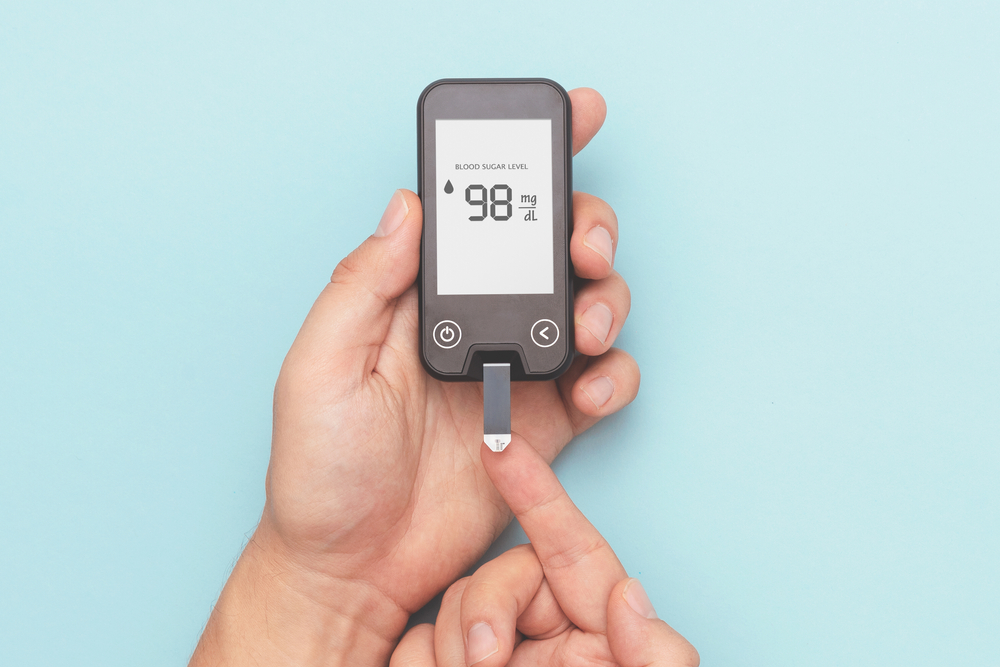
If you're diagnosed with diabetes, you might be wondering what the future of care will hold. It's hard to say, but there are several potential directions in which medical care can go in the future. Here are some of the areas that could benefit from improvements. First, consider the standards for medical care. These standards are important in several ways. For example, they will help improve the way that diagnoses and treatment of diabetes are done.
Table of Contents
Standards of medical care in diabetes

The American Diabetes Association (ADA) publishes the Standards of Medical Care for Diabetes, which are evidence-based clinical recommendations that guide healthcare. These recommendations are the mainstay for many practicing healthcare providers. However, individual healthcare providers are not required to follow all of the recommendations. Other professional organizations may make recommendations that differ from the ADA.
The updated standards focus on prevention and treatment of diabetes. These standards emphasize the importance of individualized care and emphasize screening for women at risk of developing diabetes. For example, women who plan to become pregnant should be screened before conception and at 15 weeks pregnant. Healthcare professionals should also screen for diabetes in all pregnant women, regardless of risk.
The new guidelines are based on recommendations from the ADA Professional Practice Committee, a multidisciplinary group of 16 US experts. They include guidance for first-line therapy based on co-morbidities, screening for diabetes and prediabetes in all people, changes to gestational diabetes mellitus, updated technology selection, and ongoing education for caregivers and patients.
The ADA updated its diabetes care guidelines to recommend the use of GLP-1 receptor agonists with insulin for people with type 2 diabetes. These drugs are effective in controlling blood glucose levels, but may not be appropriate for every patient. However, they are still recommended for patients who have a high risk of cardiovascular and kidney complications.
Classification

The American Diabetes Association has published new guidelines for diabetes care. The new standards will be published as a supplement to Diabetes Care in January 2021. The standards are widely accepted by health care professionals and are designed to help diabetics live healthier lives. The new guidelines were developed by the organization's Chief Scientific and Medical Officer, Dr. Robert Gabbay, and are intended to improve the lives of people living with diabetes.
The classification of diabetes is still largely based on a single aetiology (hyperglycemia) and clinical course (insulin-resistance). However, recent studies have proposed new subgroups that are based on a variety of clinical outcomes and aetiological mechanisms. The most widely replicated and validated approach identified four subgroups: insulin-deficient diabetes, insulin-resistant diabetes, age-related diabetes, and mild obesity-related diabetes. This new classification reflects a more comprehensive approach for assessing and treating the disease.
Genetic and metabolomic data have been used to create subgroups for type 2 diabetes patients. A study using mixed-meal-tolerance tests identified three subgroups that were related in their glucose response patterns. These three subgroups are closely related to insulin resistance and secretion.
This new approach to diabetes care should be seen as a form of precision medicine. The aim of precision medicine is to understand and deconstruct diabetes heterogeneity and improve the quality of life for patients living with the disease. The progress in management of monogenic diabetes may also represent proof of concept for the new approach to diabetes care. As there are only a few patients with this type of diabetes, the treatment may be more focused on the individual patient's gene mutations.
Type 1 diabetes is the most common form of diabetes. However, there are several rare types. Type 2 diabetes is primarily an autoimmune disease, and there are specific genetic forms of type 1 diabetes. However, in a majority of cases, type 1 diabetes is inherited from a single parent.
Diagnosis

Diagnosis of diabetes is the sixth leading cause of death in the Americas. While the disease itself is preventable, complications limit life expectancy. The main risk factors for developing diabetes are obesity and physical inactivity. More than 80 percent of teenagers are not sufficiently active. Fortunately, diabetes can be prevented with a healthy diet and regular physical activity. Furthermore, avoiding tobacco use can help to delay the onset of type 2 diabetes.
There are two types of diabetes, type 1 and type 2. Type 1 diabetes requires insulin injections, or an insulin pump. It may also require oral diabetes drugs or pancreas transplants. Type 2 diabetes is treated with lifestyle changes, weight loss, exercise, and diabetes medications. Diabetes is a progressive disease that can cause serious complications, including heart disease, stroke, and blindness.
Diabetes is a major public health issue. It costs an estimated $327 billion annually in the U.S., with the cost of treating the disease increasing with age. The incidence of diabetes has been increasing steadily for the past few decades. In 2017, there were about 34.2 million diagnosed people in the Americas, with nearly half of those people not even aware they have the disease.
As a patient, you must understand the risks of diabetes. It's important to get proper care as soon as possible. In case of a diagnosis of diabetes, it's vital to determine the cause. If you have diabetes, you may need regular blood sugar monitoring. A doctor will use imaging tests to identify abnormalities in the pancreas. If the abnormalities are not cancerous, follow-up surgery may not be necessary.
Diabetes can be prevented. It can be prevented by following a healthy lifestyle and making lifestyle changes. Early diagnosis can help to improve blood sugar control and even delay the onset of Type 2 diabetes.
Medication management

The ADA recently updated its guidelines for diabetes care, including recommendations for managing the risk of hypoglycemia and reducing the number of people with diabetes who experience hypoglycemia. The new standards are designed to minimize the risk of diabetes-related complications through a four-pronged approach that includes lifestyle changes, use of glucose-lowering medications with cardiovascular or kidney benefits, and diabetes self-management education. These guidelines signal a shift from the current, narrow focus on diabetes care to a more holistic and comprehensive approach to diabetes care.
The increase in use of new diabetes drugs in the last decade has been accompanied by disparities in the use and coverage of these drugs. The gap began almost immediately after these new drugs were introduced, and has continued to this day. Lower socioeconomic status is associated with lower use rates of new diabetes drugs. In contrast, higher rates of use are found among those with private coverage.
The ADA has also increased screening recommendations for people with diabetes, including those planning to become pregnant. It is now recommended that women at risk of diabetes receive screening before conception and at least 15 weeks of gestation. Healthcare professionals are also encouraged to screen all pregnant women, regardless of risk for diabetes. In addition to the ADA guidelines, the guidelines also encourage people to get COVID-19 vaccines.
If a patient is taking medications, they should review them regularly with their pharmacist and health care provider. The pharmacist can help them understand the side effects of their medications and help them to take their medications as prescribed. They can also inform patients about alternative and lower-cost medicines.










